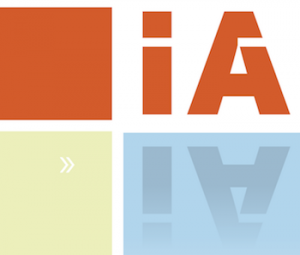 At Opus Research’s recent Intelligent Assistants Conference in New York (IAC-New York), more than 30 speakers were featured from solution providers, implementers and analyst communities. The series of presentations and panels provided a snapshot of the state of the current Intelligent Assistants (IA) landscape, and defined the trends that shape future implementations and business opportunities.
At Opus Research’s recent Intelligent Assistants Conference in New York (IAC-New York), more than 30 speakers were featured from solution providers, implementers and analyst communities. The series of presentations and panels provided a snapshot of the state of the current Intelligent Assistants (IA) landscape, and defined the trends that shape future implementations and business opportunities.
IA (#IntelligentAssistants) is well on its way along the path to maturity. Core technologies already handle millions of natural language interactions each day around the globe. Represented at IAC-New York were BMW Finance, Mexico’s Movistar (a Telefonica company), U.S. Bank, Amtrak and Ticketmaster. Each has implemented self-serve systems enabling both prospects and customers to resolve issues or complete transactions via text-based chat or natural-language speech.
Carrying on conversations or posing questions to smartphones, auto electronics and even household appliances (or at least through Amazon Echo’s Alexa) is becoming routine.
Intelligent Assistants provide a natural interface through which individuals use their own words to take control of the digital devices or e-commerce platforms. The rate of adoption varies by vertical industry, use case, and customer segment. Experience and familiarity breed confidence among individual users. User acceptance has given analyst firms like Gartner the confidence to say that, by 2020, eighty-five percent of interactions with enterprise customer care resources will be self-service. It is also why Opus Research sees a $1 billion spend on Enterprise Intelligent Assistants in that time frame and Transparency Market Research sees over $5 billion in global spending for “Intelligent Virtual Assistants” by 2022.
IAC-New York was a day-and-a-half long and full of insights and recommendations from executives who have years of experience either developing or deploying IA solutions to support enterprise customer service. The single statement that stuck in my head as the key take-away from IAC-New York was:
“Intelligent Assistance is the consumption model for Artificial Intelligence in the enterprise.”
That simple statement, from Andy Mauro, Senior Director of the Cognitive Innovations Group at Nuance Communications, settles a lot of scores between those adhering to the school of thought that artificial intelligence poses an existential threat to mankind and those who see cognitive computing resources as intelligent assistants that augment our own capabilies.
In a well-received keynote address, Xerox PARC’s CEO Steve Hoover validated the power of virtual agents to assist individual humans and “transform the customer experience.” In addition to operating PARC, Xerox owns WDS, one of the largest outsourced contact center operators in the world. Based on millions of successful interactions between live agents and customers, WDS has introduced the Xerox Virtual Agent, providing automated customer care based on what it has learned from past successes and failures to diagnose and resolve real-world problems. It has adopted a customer-first strategy that takes into account the context of an interaction based on information gathered from millions of devices and prior activities in a way that supports adaptation, collaboration and “graceful failover to humans” when required.
Based on handling hundreds of millions of calls for decades, Xerox WDS knows that 20% of call volume to live agents results from failed efforts at self-service. From this experience they have gleaned that, for IA to truly succeed, companies must “keep humans in the loop.” Without the human touch, you are just automating, not assisting.
The next step in keeping humans in the loop is to make each customer the center of digital commerce. Intelligent Assistants are designed to do just that as Geraldine McBride, founder and CEO of MyWave, articulated in her keynote address. MyWave, through its Intelligent Personal Assistant named Frank, supports “Customer Managed Relationships” (CMR), a term designed to contrast with enterprise-controlled “Customer Relationship Management” (CRM) systems.
Frank is an Intelligent Assistant that gives individuals direct control over the personal information they provide to companies with whom they want to carry out business. The first major implementation is in New Zealand where Frank acts as a Personal Power Assistant, enabling customers to choose the best energy provider and rate given what is known about their consumption patterns, preferences, payment mechanisms and the like. Yet MyWave has defined use cases that cross financial services, real estate (home finding) and other verticals with loyalty programs or hard-to-understand/manage choices.
2016 will be a transformational year for Intelligent Assistants. Dozens of new entrants will join Nuance, Xerox, MyWave and others to accelerate efforts to leverage investment in interactive voice response systems, e-commerce Web sites, contact centers and mobile apps by adding natural language processing, knowledge management, analytics, semantic understanding and machine learning to offer IA. System integrators and professional service organizations will also play pivotal rolls by supporting each enterprise’s commitment to provide a better customer experience.
As Steve Hoover of Xerox cited on a number of his slides, correctly crediting the novelist William Gibson: “The future is here – it’s just not evenly distributed.”
Categories: Intelligent Assistants

 Talk to the Web: How NLWeb Opens Conversational Access to Site Content
Talk to the Web: How NLWeb Opens Conversational Access to Site Content  Battling ‘Botenfreude’: The Power of People and Policy
Battling ‘Botenfreude’: The Power of People and Policy  Voice AI Agents Redefine CX: Trends, ROI, and Strategies for 2025
Voice AI Agents Redefine CX: Trends, ROI, and Strategies for 2025  The Power of Conversation Meets the Art of Design with Figma Make
The Power of Conversation Meets the Art of Design with Figma Make